DIGITAL PR AND THE CONTENT DISTRIBUTION ECOSYSTEM
Summary: In this blog post, I will discuss the Content Distribution Ecosystem (CDE), an integrated approach to digital PR. I define Digital PR as the process of creating and sustaining an influential presence on the digital web.
The Content Distribution Ecosystem
To best understand the Content Distribution Ecosystem, imagine a clock or an engine that runs smoothly based on the integration of a series of connected cogs that turn in sync. The more optimized the cogs are in terms of seamless connection and synchronicity, the smoother and more efficiently the engine or watch runs, and for longer.
Your broad brand content network is like this engine or clock. It’s built on an ecosystem of discrete content components or cogs. Think of these cogs as your website, email newsletters, blogs, press releases, bylines, podcasts, social media, infographics, videos, to name a few.
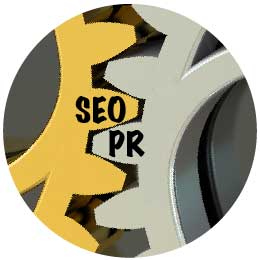
To work efficiently, your content ecosystem must be well-tuned like an engine. This will help you achieve sales and marketing goals over time. This efficiency is ultimately determined by your ranking profile in Google for core keywords and keyword clusters.
The Content Distribution Ecosystem ensures this level of efficiency and optimal performance is built into every piece of discrete content. And, most importantly, this content needs to be connected across each part of your media mix. This includes Paid, Earned, Shared and Owned media. This is known as the PESO media mix mode, a key component of how digital PR can be defined.
Digital PR Defined
The Content Distribution Ecosystem is a foundational component of a Digital PR effort. As mentioned earlier, I define Digital PR as the process of creating and sustaining an influential presence on the digital web. Note that this is different than Traditional PR, which is primarily focused on media outreach and press release distribution. Traditional PR is part of an Earned media effort, which I discuss more below.
This influential presence is reflected primarily by three factors. First, your ranking in search. Second, your backlink profile. And third, the number of third-party mentions you get in editorial outlets and on social media.
Digital PR and the PESO Media Mix
The Content Distribution Ecosystem is a holistic approach to content development. By this I mean the content you create and publish across media mix channels must be optimized to work together. This makes sense on the surface, but it’s surprising how often brand content is disconnected once it hits the distribution channel.
Many times this is because the individuals creating discrete channel content are not in sync. This content development silo mentality is often the source of poor Google rankings.
The PESO Media Mix model was developed by the people at SpinSucks. It’s designed to bring organization to digital PR optimization. It does this by helping define the boundaries of the overall media mix landscape.
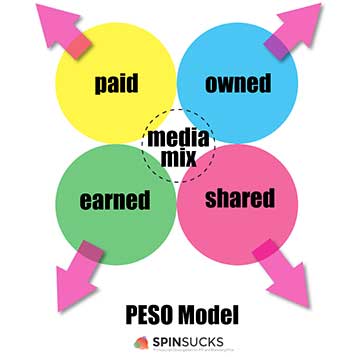
PESO is an acronym for Paid, Earned, Shared and Owned media. Any content you are going to produce and distribute will fit into one of these media mix buckets.
Paid: Any form of “pay to play‚”advertising, from traditional TV/Newspaper to Facebook marketing. This also includes alternate forms of paid media such as promotions and partnerships.
Earned: Earned media is exactly what it sounds like — media that is garnered in third party outlets such as online editorial websites through the efforts of traditional media relations. This includes, among other types, bylines, press releases, mentions in editorial roundup stories, etc.
Shared: This category reflects the enormous growth of social media as a platform for facilitating engagement and connectivity. Shared media is any media platform that facilitates the ability for multiple contributors. Think of a Facebook Group where users share their stories or opinions. Or blog posts where readers can contribute comments at the bottom.
Owned: Owned media reflects the growing presence of brand publishing on the digital web. Owned media is any published content that you direct and control the publishing of, including websites, YouTube videos, blog posts and infographics.
Six Steps to an Efficient Digital PR Strategy
So I’ve identified two benefits of a connected ecosystem of content — Optimization and Efficiency. And, the media mix boundaries the content will work within — the PESO Media Mix model. Next, I’ll identify six steps to an efficient digital PR strategy. Essentially, following these six steps will result in success with regards to the Content Distribution Ecosystem approach to digital PR.
Digital PR Step 1: Content Audit

Before starting off on the road of developing new content, it’s best to take a step back and get an inventory of what content you already have created. Much of your current SEO value and market positioning lies within the context of your existing content assets.
I’ll talk about positioning more in Step 2 (Strategy). But, your current position in the market is largely defined by how your current content shapes brand impressions. This is true both in the eyes of consumers who read/view it and in the eyes of the search engine bots. These bots are crawling the web and trying to make sense of content for indexing.
So, like it or not, you have a starting point for your digital PR efforts moving forward. And that starting point will become clear once you perform the content audit.
This is where you take an inventory of the themes and keywords associated with each piece of content you have published. And, remember that this means reviewing this from the PESO perspective — Paid, Earned, Shared and Owned media.
In performing the content audit, gravitate towards three to five themes or clusters you can put each content piece into. Identify each of these clusters by a phrase or individual keyword that occurs most frequently in the content.
Once you have done this, you will begin to get a sense of a first-person perspective on your brand positioning — based on existing content. Understandably, you may not like (or even agree with) this positioning status, but that’s not the purpose of the audit stage. This stage is only for identifying the state of the brand in terms of current content positioning.
Digital PR Step 2: Strategy

The natural next step is defining and setting a strategy. Your strategy should reflect the market realities you uncovered in your content audit. The market realities essentially point to your position and help define your positioning strategy.
The Principle of Positioning
The principle of positioning is often misunderstood. This means many marketers think of positioning as a tactical exercise. As if it’s something you do to a brand or product. But your brand or product position is really just a reflection of your place in the context of the competitive landscape. In other words, companies don’t position brands, products, and services — people do.
This is an important concept to grasp when you start planning your strategy. So, if you make the mistake of believing you define your position by declaration or sales speak, you will essentially be arguing with the market in general, and this is a battle that you will not win.
The facts and data you glean from the content audit will highlight where your Strengths, Weaknesses, Opportunities and Threats are. Building around these four foundational market realities is what’s know as developing a SWOT Analysis. SWOT is an acronym for Strengths, Weaknesses, Opportunities and Threats.
Be realistic in identifying the components of each category, because, as the saying goes … “garbage in, garbage out.” If you ignore the market realities in owning up to your Weaknesses and Threats for example, your strategy will send you on a fool’s errand.
All brands and products have areas where they can improve. So, listen to the market’s input, and identify where yours and your competitor’s Strengths are. With this, you’ll be well on your way to developing a strategy that will result in achieving your marketing and sales goals.
Digital PR Step 3: Keywords and Keyword Clusters
The next step in a successful Digital PR effort is to identify your core keywords, keyword phrases and keyword clusters. These are the general themes and “hooks” that relate to your brand or product. These themes reference the associations that match with your product or service.
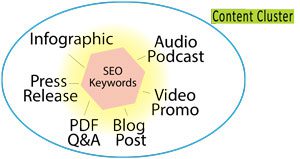
SEO, or Search Engine Optimization, has become a very popular and effective way to develop a keyword strategy. Your strategic approach to SEO should reflect the realities of the way that Google and other search engines see and rank your brand or product within the context of the market at large.
Google, and other search engines, have increasingly gotten better at understanding the broad context of your brand ecosystem as it relates to your content assets. This means that in order to be competitive in search rankings, your content must be organized and developed in a way that Google understands and rewards.
This is where identifying the keywords and keyword clusters closely associated with your brand pays off in the work you do in the initial stages of setting your strategy. Tools like Google’s Keyword Planner or other services like MOZ and SEM Rush can help you identify the core keywords that the market associates with your brand or service.
Once you have a handle on these keywords and keyword themes, it’s time to decide if you are ranking (or positioning) for desired keyword associations. If not, or if you’re not ranking high enough for these associations, it’s time to work on your keyword strategy.
Keywords and Keyword Clusters
This means identifying the ideal keywords and keyword phrases you want to rank for, and beginning to systematically integrate those into content across the PESO media mix. Think of doing this in a campaign type of approach, which is what the Content Distribution Ecosystem is all about.
In other words, when you issue a press release that has a customer quote, take the contents from the customer interview. Make sure you’ve recorded the interview, and edit that into an MP3 file that can be uploaded as a podcast.
Use the contents of that interview to create an editorial-style PDF Q&A with the customer. Write a blog post about the customer and his/her use of the product. Next, create a short VNR (Video News Release) version of the press release that can be uploaded to YouTube or social media. You get the idea.
Digital PR Step 4: Optimization
Optimization is all about making sure that the cross-pollination of content in your PESO media mix will be understood by Google. This is where the concept of Keyword Clusters comes back into play.
Google’s bots are getting smarter every day at interpreting content contextually. This means that single keyword usage alone will not guarantee a high rank in Google any longer. Your content now has to be thematically sound, meaning Google’s AI-based bot sees contextual and thematic consistency in the content. Put another way, the content must be well-written and organized.
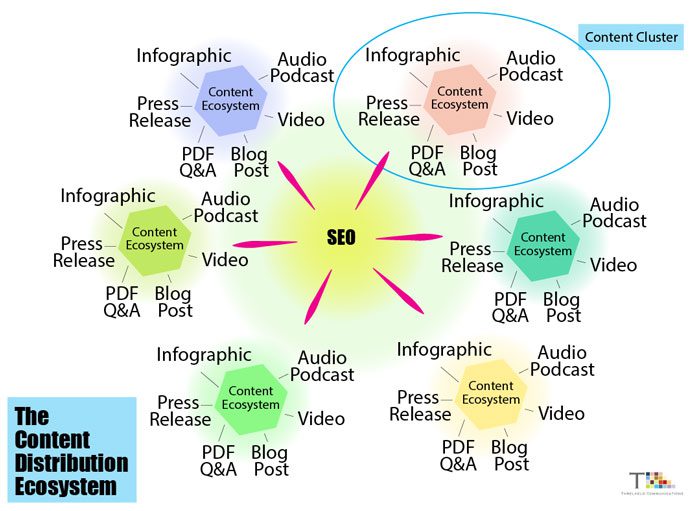
An essential part of the Optimization process is understanding the importance of thematic congruency across media mix properties. In other words, the themes and keywords used in your Google Adwords campaign should also be part of your press release, blog post, VNR, podcast, etc.
Google’s bots will be able to identify this contextual consistency across content platforms and reward your level of organization and optimization with higher rankings for each piece of content.
Digital PR Step 5: Publish
The era of the Brand-as-a-Publisher is alive and well today on the digital web. This means that brands that think like a formal publisher (ie a news outlet or television station) can oftentimes outrank the formal news channels in search and visibility.
Publishing content on the web has never been easier, as the more than 2-million published blogs a day attests. When publishing your content, it’s essential that you consider the campaign approach, releasing similar themed content pieces across media channels.
This multi-level publishing approach is the heart and soul of the Content Distribution Ecosystem. It’s called an ecosystem because the content is spread across the media landscape. But, it’s connected in terms of SEO value and thematic similarity. Think of SEO strategies as the glue which holds this content together across the broad content landscape.
The best way to publish content in the Content Distribution Ecosystem is by sticking to a regular publishing schedule. Consistency is key, because Google’s bots are continually scouring the web for content updates. And the more these bots recognize new content that is contextually connected, the more you are going to build your rank profile in Google.
To best organize your publishing approach, use a spreadsheet or a tool like Co-Schedule or Trello as an editorial calendar. This level of organization will help you stay on track in your efforts. It will also help avoid getting bogged down in dealing with inevitable distractions that will creep in to kill your momentum and progress.
Digital PR Step 6: Evaluate
Any program that you’re going to spend a significant amount of time and effort on should be tracked for ROI. And the Content Distribution Ecosystem model is no exception.
Fortunately, there are plenty of ways you can track success in the CDE. One of the most effective ways is to monitor your place and movement in keyword rankings over time. This is particularly true for those keywords or phrases that you have identified as critical to your brand.
Use a tool like the Keyword Planner, SEM Rush, or MOZ to monitor the movement of your core keywords and phrases. Set goals for where you want to rank, but be realistic. Depending on the competitive nature of your sector and keywords you want to rank for, positive movement up in rankings can take months.
This is one of the key reasons why consistency in efforts is important. There are really no quick fixes when it comes to measuring higher in rankings over time. You just have to commit to the process and stay diligent with your efforts over time, and with consistency.
If you do this, you greatly improve the chances that you will be able to see your brand and rankings trending up for those keywords and phrases you have identified as vital.
Conclusion
The Content Distribution Ecosystem is the essence of what Digital PR is. It’s the process of creating and sustaining an influential presence on the digital web. By following the six steps I’ve outlined here, you will be able to create a content framework and structure that will see improved results in terms of visibility and ranking over time, for a long time.
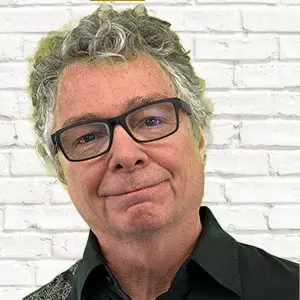
Bill Threlkeld
Bill Threlkeld is president of Threlkeld Communications, Inc., a Digital PR, SEO and Content Marketing & Measurement consultancy. Built on three-plus decades experience in Public Relations and Content Marketing. Bill’s unique value is in leveraging PR to create content “clusters” and campaigns integrating a blend of Public Relations, SEO, social media, and content that can be tracked and measured for optimized performance. Bill’s experience includes: tech, musical instrument, pro audio, legal, entertainment, apps, software, cloud services, travel, telecom, and consumer packaged goods.
